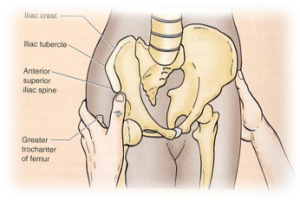A typical women’s health physiotherapy assessment
The typical women’s health physiotherapy consult will begin with an assessment of the patient’s signs and symptoms. This may include some of the following techniques:
History
The best way to help with diagnosis of a women’s health pathology is a thorough history. This can inform the practitioner of which tissues are causing the dysfunction, how they react to movement and rest and how best to treat them. Simple things like fluid intake may be essential to cure incontinence or even rule out more sinister pathologies. During a history the practitioner will discuss your personal goals; some women would like to be able to play with their grandchildren outside without leakage while some other women may want to return to power lifting following birth. Knowing a patients specific goals is crucial for prescribing treatment and ensuring that the following sessions are targeted to that specific patient. Some of the questions asked during the history may be of intimate nature; so if you feel uncomfortable at any time, please don’t hesitate to let your practitioner know.
Bladder diary
A bladder diary is a two-day diary in which the patient records their fluid intake, urine output, urge to urinate and leakage frequency. This is essential for some patients to diagnose their bladder pathology, whether it be stress incontinence, urge incontinence, urine retention or bladder compliance issues. This is also a helpful tool for ruling out more sinister pathologies such as kidney dysfunction, sleep apnoea and overflow incontinence. The best way to get through the two day diary is to purchase a new measuring jug that can be thrown away after the two days.
Real time ultrasound
See this link for a detailed explanation of the real time ultrasound.
External pelvic assessment
Palpation and a hands-on assessment of the pelvis externally is a convenient way to assess how a patient’s pelvic floor dysfunctions may be affecting their whole body. Many patients report low back pain, tailbone pain and hip pain which may be referred from the pelvic floor but may also be caused by pelvic floor weakness. It is also possible to assess the tone and strength of the pelvic floor hammock externally through clothing. This assessment may be very similar to a standard physiotherapy consult.
Internal vaginal assessment
An internal vaginal assessment is the best way to diagnose/grade prolapse and pelvic floor strength. During an internal vaginal examination, the practitioner will use a gloved finger with lubricant inserted into the vagina to palpate the muscles. The practitioner will ask you to perform a pelvic floor contraction and assess the strength. The practitioner may also ask you to push down to assess any vaginal wall movement which may indicate a prolapse. This procedure usually only lasts approximately 10 minutes and is conducted in a private room.

